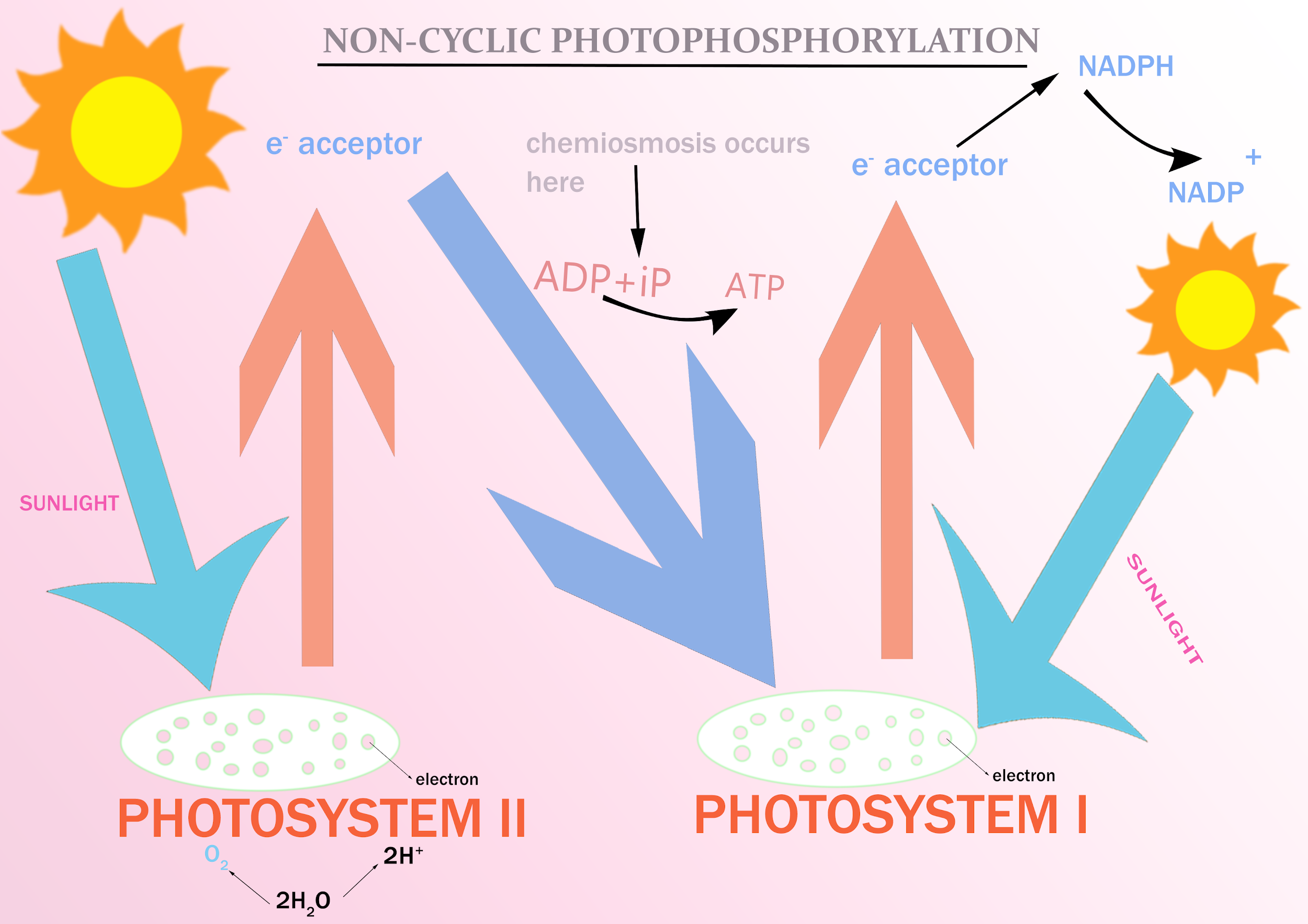Question
Question: NADP reduces to \(NADP{ H }_{ 2 }\) in A. PS- I B. PS- II C. Calvin cycle D. Non-cyclic phot...
NADP reduces to NADPH2 in
A. PS- I
B. PS- II
C. Calvin cycle
D. Non-cyclic photophosphorylation
Solution
Reduction of NADP to NADPH2 occurs in a type of phosphorylation that is absent in autotrophic bacteria as only one photosystem is present in them. Both ATP and NADPH2 are formed in this type of photophosphorylation.
Complete answer:
The non-cyclic photophosphorylation is known as Z-scheme and it involves both PS-I and PS-II photosystems.
The reduction of NADP to NADPH2 takes place in PS-I in non-cyclic photophosphorylation. This NADP reductase reacts with NADP and reduces it to NADPH+H+. This H+ is obtained from the stroma.
Additional Information:
The steps involved in non-cyclic photophosphorylation are as follows:
-Absorption of light energy of specific wavelength by the chlorophyll and accessory pigments. These pigments absorb energy and transfer it to the reaction center of PS- II P680. This results in photoexcitation of the P680 reaction center and it discharges one electron which is passed to a pigment named pheophytin.
-This loss of electron is compensated by absorbing electrons released during the photolysis of water.
-After passing through a series of carriers plastoquinone, cytochromes, b6−f complex, and plastocyanin the electron is passed to photo center P700 of PS-1 by plastocyanin.
-P700 releases this electron on absorbing light energy of a suitable wavelength.
-This electron is transferred through several quinones, FeS complexes, Ferredoxin, and NADP reductase.
So, the correct answer is, ” NADP reduces to NADPH2 in Non-cyclic photophosphorylation. ”
Note: It should be noted that the PS- I and PS- II photosystems are named just in the order in which they were discovered. In cyclic photophosphorylation of PS-I is involved but both photosystems are involved in the non-cyclic type of photophosphorylation. In the non-cyclic type of photophosphorylation both ATP and NADPH are formed, which are considered as assimilatory power, but in the cyclic type of photophosphorylation only ATP formation takes place.

